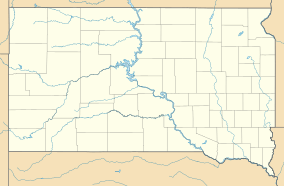Sand Lake Wetland Management District facts for kids
Quick facts for kids Sand Lake Wetland Management District |
|
|---|---|
|
IUCN Category IV (Habitat/Species Management Area)
|
|
| Location | South Dakota, USA |
| Nearest city | Columbia, SD |
| Area | 45,000 acres (182 km2) |
| Established | 1961 |
| Governing body | U.S. Fish and Wildlife Service |
| Website | Sand Lake Wetland Management District |
The Sand Lake Wetland Management District is a special place in South Dakota, USA. It is managed by the U.S. Fish and Wildlife Service. This district is the largest of its kind in the entire U.S. It helps protect important wetland areas. These wetlands are vital homes for many animals and plants.
Contents
What is a Wetland Management District?
A Wetland Management District is an area set aside to protect wetlands. Wetlands are lands that are covered by water, either all the time or for part of the year. Think of them as marshes, swamps, or bogs. They are super important for nature. They filter water, prevent floods, and provide homes for wildlife.
Protecting Nature's Homes
The Sand Lake Wetland Management District covers a huge area. About 45,000 acres (182 km2) are directly protected by the government. This means these lands are kept safe for nature. But that's not all! The district also works with private landowners. They manage another 550,000 acres (2,225 km2) together. This is done through something called conservation easements.
What are Conservation Easements?
Conservation easements are like agreements. Landowners agree to protect their land's natural features. This means they won't build on certain parts or change them. These agreements help keep wildlife habitats safe. They also act as "buffer zones." Buffer zones are areas that protect the main wildlife areas from outside changes.
Waterfowl Production Areas
Inside the district, there are 162 special spots called Waterfowl Production Areas. These areas are perfect for ducks, geese, and other water birds. They provide safe places for these birds to nest, raise their young, and find food. Protecting these areas helps ensure that many different kinds of birds can thrive.
Why Wetlands are Important
Wetlands are like nature's sponges. They soak up extra water, which helps prevent floods. They also clean water by filtering out pollution. Many different animals depend on wetlands. This includes birds, fish, insects, and mammals. By protecting wetlands, we help keep our environment healthy for everyone.



